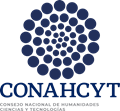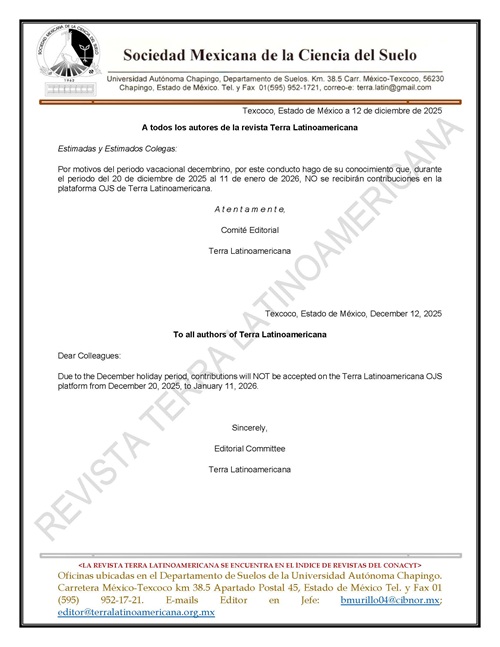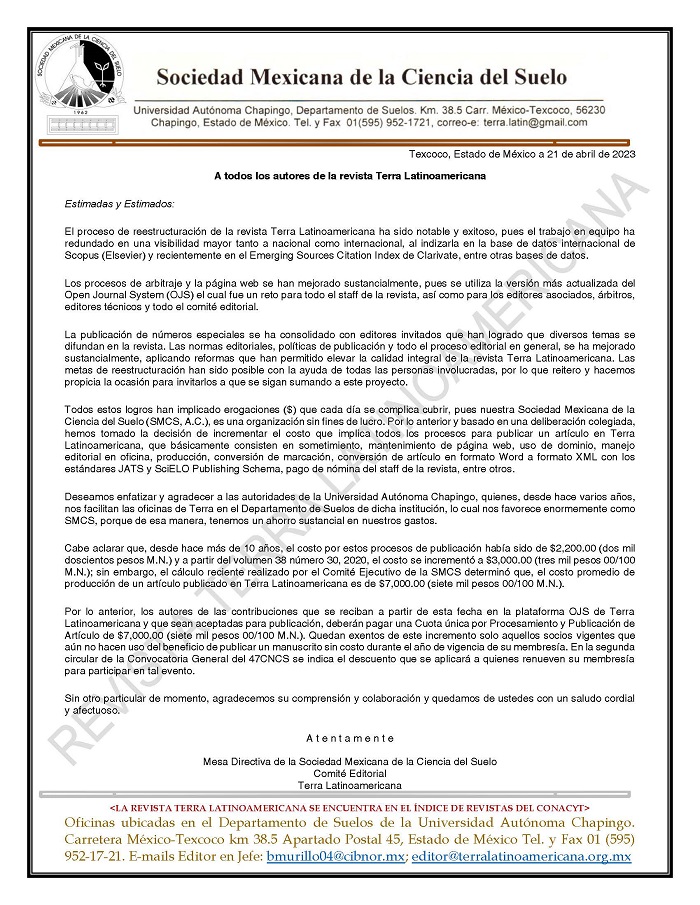Biofertilizer and its Correlation Between Productive and Quality Parameters in Key Lime (Citrus aurantifolia Swingle)
DOI:
https://doi.org/10.28940/terra.v41i0.1685Keywords:
organic fertilizer, citrus, foliar, microorganismsAbstract
Key lime is a crop of high demand and importance in the socioeconomic development of Peru, using mostly inorganic fertilizers that generate constant increases in production costs. Therefore, it becomes necessary to use of organic and innocuous alternatives for its production. To assess the effect of different doses of biol or biofertilizer, and its correlation with productive and quality parameters in the cultivation of Key lime, four treatments were evaluated: T0 (control: conventional management), T1 (Biol 10%), T2 (Biol 20%) and T3 (Biol 30%) applied every 15 days, evaluating the following parameters: 1) productive parameters: fruit diameter (FD), peel thickness (PT), fruit weight (FW), yield per ha (YHa) and 2) quality parameters: acidity (AD), percentage of soluble solids (PSS), pH, lemon juice (LJ). Correlation analysis, principal component analysis (PCA), an ANOVA, and the Benefit/Cost ratio were performed. In the PCA,
two components were obtained: C1 (71.40%) and C2 (11.80%) explaining 83.20% of the variability. C1 explained the greatest variability and grouped variables: G-I (LJ, AD), G-II (FD, PT, PSS) and GIII (FW, YHa). The treatments Biol 10%, 20%, 30% presented the best results in LJ and AD (G-I) (P < 0.05). The variables FD, PT, PSS and pH (G-II) did not show differences among treatments, and the FW and YHa in T2 (Biol 20%) exhibited the highest values; likewise, it was the most profitable
(B/C=3.84). Biofertilizer is an alternative to reduce the use of synthetic fertilizers and production costs. Biofertilizer at 20% was more profitable and improved the evaluated variables.
Downloads
Publication Facts
Reviewer profiles N/A
Author statements
- Academic society
- Terra Latinoamericana
- Publisher
- Mexican Society of Soil Science, C.A.

















